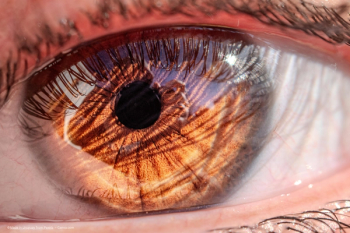
Review of the year 2013: Glaucoma 2013
There is buzz happening within the glaucoma industry, and two experts weigh in on the various highlights of the year.
Medical therapy
Importance of the ocular surface
Nevertheless, he does think that there are some potentially interesting options in mucomimetics and mucin-promoting drugs that may be developed in the future. "Currently, there are no such drops available in Europe. Professor Baudouin proposed an interesting hypothesis several years ago that prostaglandins may exert a positive effect to mucin-secreting cells," continued Prof. Konstas. "This effect may explain why prostaglandin tolerability is better than expected when one considers their BAK concentration." He explained that BAK is known to be toxic to goblet cells but it may be that with long-term prostaglandin therapy there is a compensatory effect, which is less deleterious to goblet cells and depends on overall drug exposure and individual sensitivity.
"Hopefully with the new generation of preservative-free prostaglandins (e.g., tafluprost preservative-free) we may gather better evidence on the positive impact of these drugs on the ocular surface," Prof. Konstas stated. "In that respect it was encouraging that in a recently published 24-hour study we documented similar efficacy between latanoprost containing BAK and preservative-free tafluprost."1
Professor Holló agreed that the ocular surface remains an important issue and also pointed to studies involving prostaglandins that were presented at key events during the year. "This year we saw the first year results of two phase III studies be presented at ARVO and WGC. These studies examined the preservative-free unit dose versions of two different prostaglandin/timolol fixed combination therapies," he said. "Hopefully, these combination therapies will become commercially available soon."2,3
Prof. Konstas summarized, "Other exciting strategies (regulating inflammation etc.) may apply to specific cases with severe ocular surface disease, which remain a management challenge for the future."
Patient adherence and management
A long standing discussion within glaucoma medical therapy is that of patient adherence and management. A lot of glaucoma patients are elderly and as such may not be able to adhere to a therapeutical regimen as easily as a younger patient. "As time goes by we become wiser and more acutely aware of the importance of parameters, such as adherence and long-term tolerability upon the success of prescribed therapies and their role in disease management," asserted Prof. Konstas. "These key parameters adversely impact and greatly limit the long-term success of our therapies and result in needless loss of vision for many of our glaucoma patients. There is some promising evidence showing that new medical therapy options may improve adherence and tolerability, but a lot of research is needed in this area."
Prof. Holló believes that there may be some weight in the issue of whether therapies are provided in a unit dose or multidose form. "In general, very elderly patients with severe visual field damage who have technical barriers against being able to self-administer therapies from a unit dose container are not recommended to use this formulation, to avoid ocular surface injury and missed installations. However, their family members could potentially help to administer drops in these cases," he said.
Lacking in development
"We really lack an effective treatment option for glaucoma, however, that has minimal side effects," emphasized Prof. Konstas. "Further, we really need to improve our understanding over the 24-hour period and long-term efficacy and tolerability of all available treatment options. We have failed to fully explore new treatment strategies. I feel the other subspecialities in ophthalmology are further ahead than glaucoma in exploring novel therapies."
This, he believes, is in part due to the difficulties that are encountered in diagnosing and quantifying progression of glaucoma, which limits the level to which small effects of potentially new drugs (such as neuroprotective drugs) can be measured. "This leads to false negative findings in some of our preclinical work and very expensive failures in clinical work (e.g., memantine). Consequently, these failures have scared off the industry from further exploring neuroprotection and the NIH and other funding agencies around the world are not providing funding in this arena," added Prof. Konstas.
"I think we have a great deal of catching up to do in glaucoma from neuroprotection to other areas such as blood flow and oxidative stress," he stated. "In my opinion, neuroprotection is theoretically still feasible, but very difficult to prove. Gene and stem cell therapies appear the most promising future therapies. Retinal ganglion cell population may be restored by neural stem cells, especially pluripotent stem cells. Although still a distant prospect, gene therapies may eventually allow repair of the trabeculum meshwork."
Newsletter
Get the essential updates shaping the future of pharma manufacturing and compliance—subscribe today to Pharmaceutical Technology and never miss a breakthrough.







































